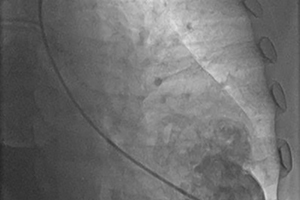Left ventricular pseudoaneurysm: the niche of post-infarction mechanical complications
Abstract
Left ventricular pseudoaneurysm (LVP) is a very rare, but potentially lethal mechanical complication of acute myocardial infarction (AMI). Despite representing a unique subset of cardiac rupture, it presents peculiar features that distinguish it from both ventricular free-wall rupture (FWR) and ventricular true aneurysm. LVP occurs in less than 0.5% of patients affected by AMI. However, LVP is generally burdened by high mortality, often related to false cavity rupture, leading to catastrophic and often irreversible consequences. The risk of rupture is inversely proportional to the timing from AMI onset, which also determines both the classification of LVP and drives the indication for treatment. Despite the lack of a current consensus on LVP management, urgent surgery is the treatment of choice for LVPs occurring within 3 months from AMI, especially if larger than 3 cm in diameter. A matter of debate, however, is represented by chronic LVPs, especially because the risk of rupture decreases progressively as time passes and left ventricular (LV) false cavity stabilizes. Surgical mortality rate remains not negligible (more than 20%), but these suboptimal results may be considered acceptable, especially considering the lethality associated with the occurrence of pseudoaneurysm rupture. Diagnostic workup is essential for anatomical characterization of LV rupture, which is mandatory to guide the decision on surgical approach and technique for pseudoaneurysm repair. Finally, for a subset of patients with anterior LVP and a well-defined fibrotic neck, and deemed at excessively high surgical risk, percutaneous closure of the cavity has been described with encouraging results.
Cover






